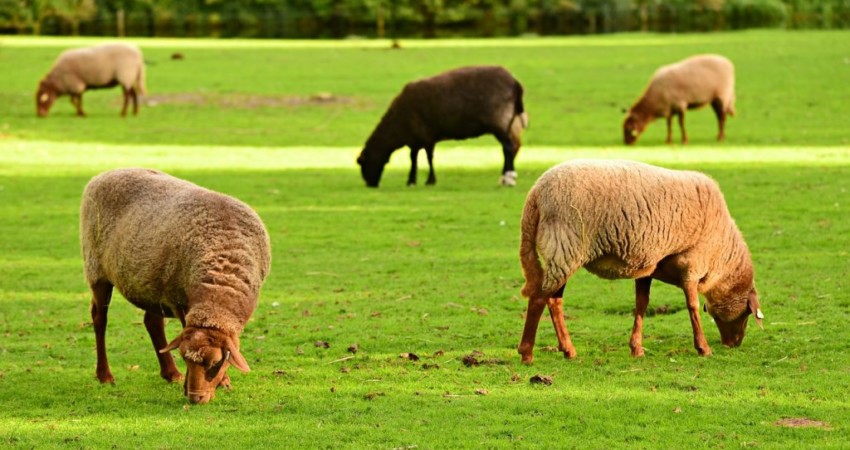

Sheep are ruminants, and they start eating pasture from about a week old. They are efficient ruminants by about a month old.
Sheep can graze more closely than cattle as they have a split upper lip. They graze for about 8-9 hours/day, which can extend to 13 hours when feed is short. Grazing bouts (when feed is plentiful) are about 20 –90 minutes, and they can have as many as 9 of them in 24 hours.
After a grazing bout they have spells of 45-90 minutes of rumination and rest.
Mixed grazing by cattle and sheep is ideal to maintain a good close pasture, and sheep adapt to this without any behavioural problems.
The condition of a sheep’s teeth is critical, and can have a big effect on behaviour.
Sheep learn from their mothers which feed to eat. South Island sheep will eat grain and hay as they learn from their mothers in spring. North Island sheep will generally not eat grain or hay as they are never offered it, except in serious feed shortages such as droughts.
It often takes 2-3 weeks for sheep to learn as mature animals, and some may never accept supplementary feed and starve. Sheep also learn to eat different feeds from other adults or their peers.
Sheep store surplus energy as fat inside the body cavity (eg kidney fat and around the intestines) and under the skin. They use this up during late pregnancy and lactation for lamb growth and milk production.
About 3-4 weeks before mating ewes are given extra feed to encourage extra eggs to be shed from the ovary, ending in more lambs produced. This is called “flushing”
Sheep kept indoors show stress by eating the wood of their pens and they will also eat their wool, or the wool of the sheep in the next pen. This wool eating is seen in sheep that have been buried in deep snow for up to three weeks.
Sheep need water, about 4litres/day/adult sheep and 1 litre/day for a lamb. But they can adapt to severe drought conditions and extract enough moisture to survive from herbage.
 Contact Jaguza Support
Contact Jaguza Support